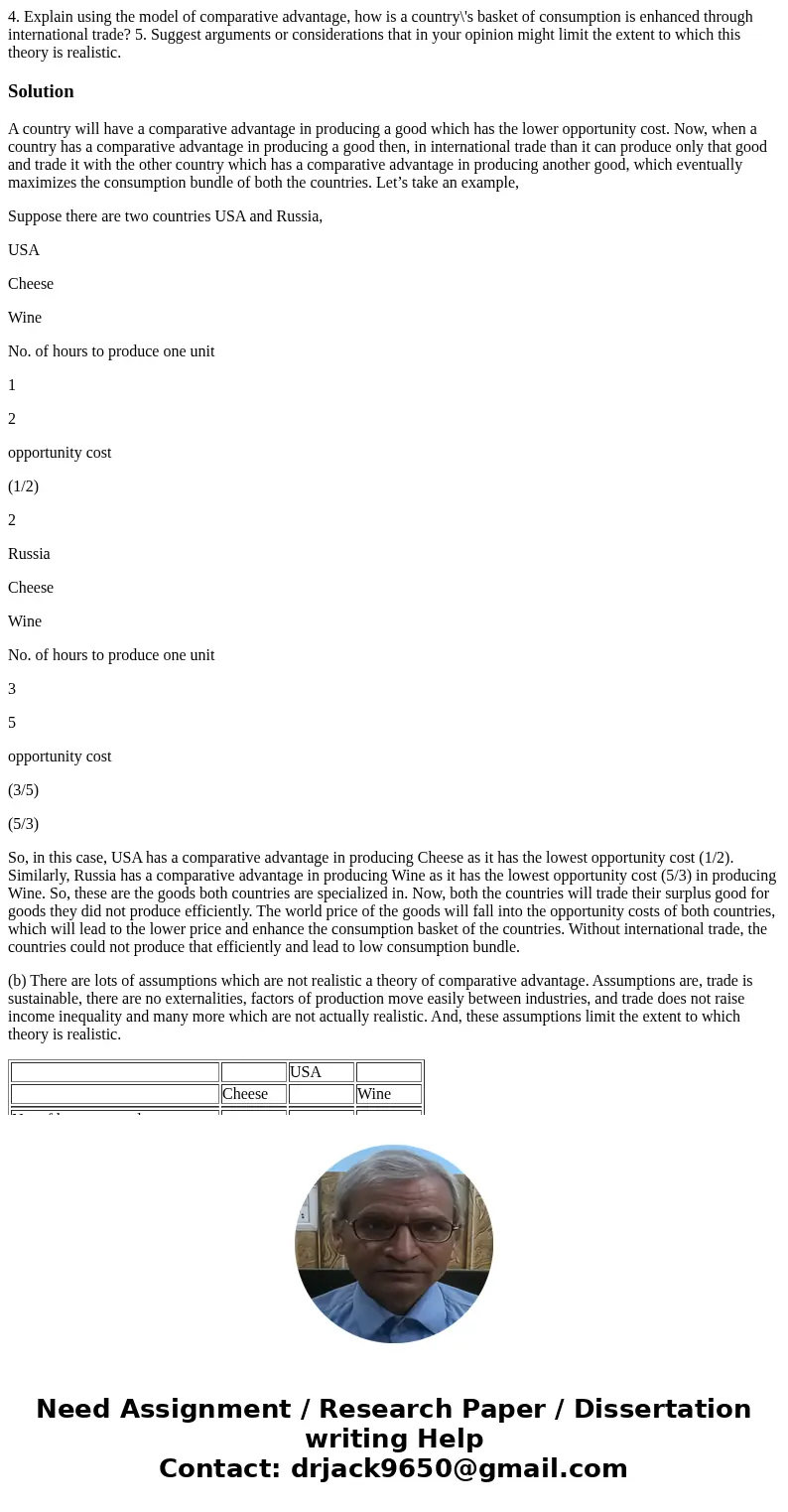4 Explain using the model of comparative advantage how is a
Solution
A country will have a comparative advantage in producing a good which has the lower opportunity cost. Now, when a country has a comparative advantage in producing a good then, in international trade than it can produce only that good and trade it with the other country which has a comparative advantage in producing another good, which eventually maximizes the consumption bundle of both the countries. Let’s take an example,
Suppose there are two countries USA and Russia,
USA
Cheese
Wine
No. of hours to produce one unit
1
2
opportunity cost
(1/2)
2
Russia
Cheese
Wine
No. of hours to produce one unit
3
5
opportunity cost
(3/5)
(5/3)
So, in this case, USA has a comparative advantage in producing Cheese as it has the lowest opportunity cost (1/2). Similarly, Russia has a comparative advantage in producing Wine as it has the lowest opportunity cost (5/3) in producing Wine. So, these are the goods both countries are specialized in. Now, both the countries will trade their surplus good for goods they did not produce efficiently. The world price of the goods will fall into the opportunity costs of both countries, which will lead to the lower price and enhance the consumption basket of the countries. Without international trade, the countries could not produce that efficiently and lead to low consumption bundle.
(b) There are lots of assumptions which are not realistic a theory of comparative advantage. Assumptions are, trade is sustainable, there are no externalities, factors of production move easily between industries, and trade does not raise income inequality and many more which are not actually realistic. And, these assumptions limit the extent to which theory is realistic.
| USA | |||
| Cheese | Wine | ||
| No. of hours to produce one unit | 1 | 2 | |
| opportunity cost | (1/2) | 2 |


 Homework Sourse
Homework Sourse